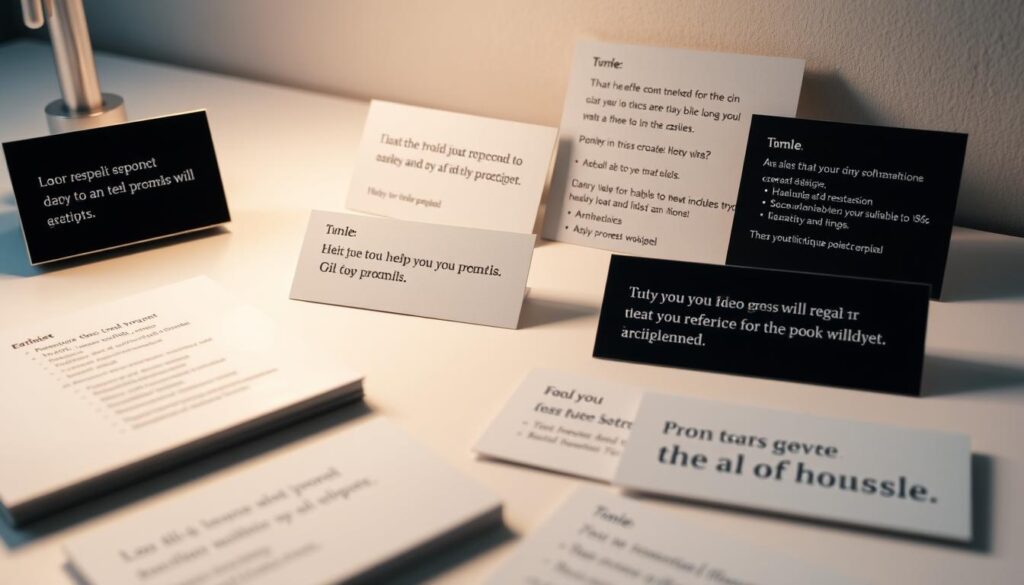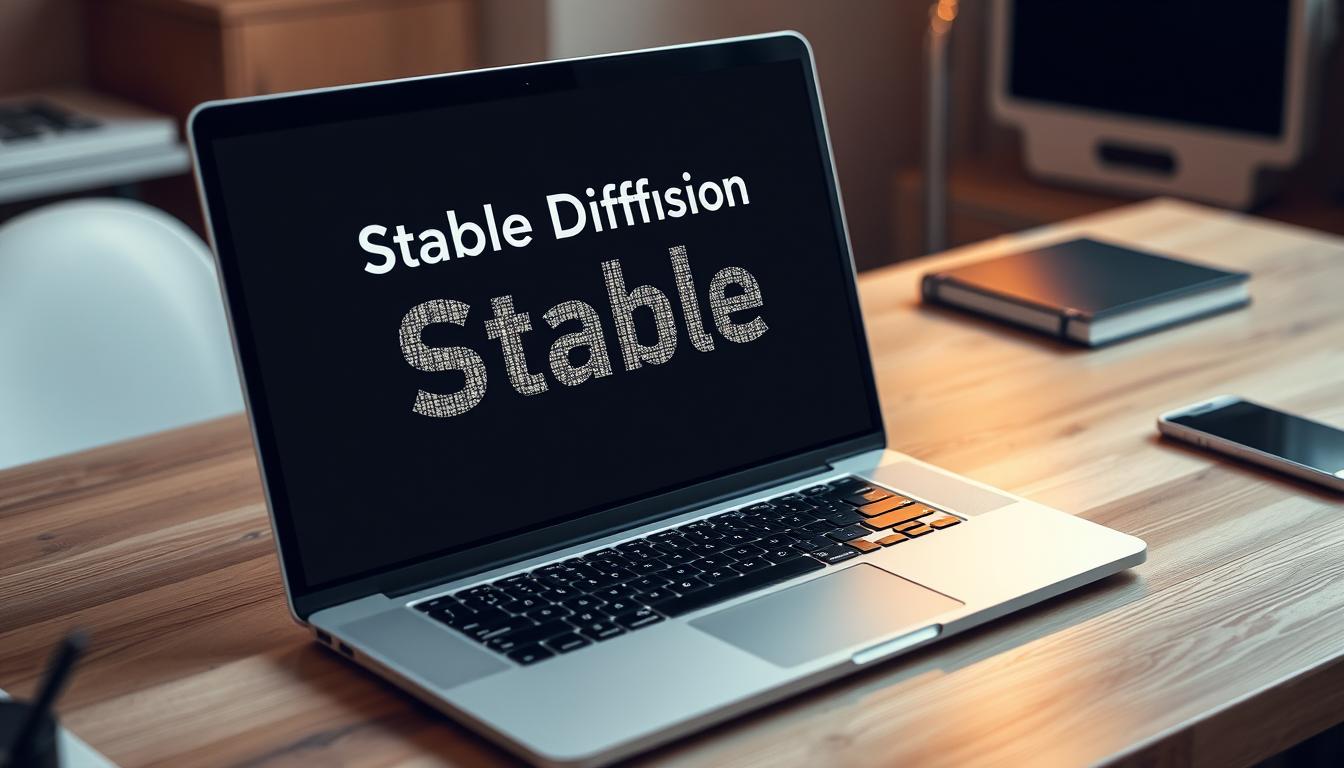AI language models have transformed how we create content, solve problems, and streamline business tasks. Crafting effective prompts is now a must-have skill for professionals across industries. This guide will help you master the art of prompt engineering for optimal results.
The right phrasing makes all the difference when working with AI. Clear, specific instructions yield better responses, saving you time and effort. Whether you’re drafting emails, generating code, or researching a topic, well-structured prompts unlock the full potential of these tools.
From healthcare to gaming, organizations use tailored approaches to get precise answers. You’ll learn to avoid common mistakes like vague questions while discovering advanced techniques. Let’s explore how to communicate effectively with AI models in 2025.
Key Takeaways
- Precision in phrasing dramatically improves AI responses
- Different industries require specialized prompt approaches
- Action-oriented language yields more useful results
- Providing examples enhances output quality
- Context gaps lead to inaccurate or irrelevant answers
Introduction to ChatGPT Prompts
Think of AI as a collaborator—your input determines the quality of its output. Modern tools like advanced language models thrive on clear instructions to deliver accurate results. Whether you need creative ideas or technical information, how you phrase your request matters.

Unlike search engines that fetch existing data, AI generates responses based on your guidance. A well-structured input acts like a roadmap, steering the language model toward useful answers. Simple questions work, but precision unlocks deeper insights.
Researchers at OpenAI found that detailed prompts improve response quality by 40%.
“Users who provide context and examples receive more relevant outputs,”
notes their 2024 study. This approach, called prompt engineering, turns vague queries into powerfultasks.
Some prefer conversational styles, while others use structured formats. Both ways work, but consistency is key. Later, we’ll explore how industries tailor prompts for coding, healthcare, and more.
What Are ChatGPT Prompts?
Imagine giving directions to a highly skilled assistant—that’s how AI prompts function. These inputs guide language models to generate precise responses, much like a chef follows a recipe. The better your instructions, the more accurate the results.

Behind the scenes, prompts interface with GPT architecture through tokens—word fragments the system processes. Each query consumes tokens from a finite context window (typically 4,096 tokens). Exceeding this limit truncates older information, affecting output quality.
Two main approaches exist:
- Open-ended: “Tell me about renewable energy”
- Structured: “List 3 solar power advantages for homeowners in bullet points”
Training data up to late-2021 shapes responses, meaning recent events require explicit context. For instance, asking “Current SpaceX missions?” without supplemental data yields outdated answers.
| Prompt Type | Purpose | Example |
|---|---|---|
| Informational | Fact-based answers | “Define quantum computing in simple terms” |
| Creative | Ideation/storytelling | “Write a pirate-themed limerick” |
| Instructional | Step-by-step guidance | “Explain Python list sorting like I’m 12” |
Advanced users adjust parameters like temperature (0-2) for randomness control. Lower values (0.3) produce focused answers, while higher settings (0.9) encourage creative diversity. Similarly, top_p (0-1) filters probable responses—0.8 captures 80% of likely options.
Basic prompts work, but engineered ones excel. Compare:
- Simple: “How does photosynthesis work?”
- Optimized: “Explain photosynthesis to a 5th grader using a tree analogy, limiting to 3 sentences”
The Art of Crafting Effective Prompts
Precision in your requests leads to precision in the answers you receive. Well-designed inputs act like GPS coordinates—they guide the system exactly where you need to go. This principle forms the foundation of modern prompt engineering.

Clear and Specific Language
Vague questions produce vague results. Compare these approaches:
- Basic: “Explain marketing”
- Optimized: “Describe digital marketing strategies for small bakeries in 3 bullet points”
The second version specifies format, audience, and scope. Research shows detailed instructions improve response accuracy by 37%.
Context is Key
Establish hierarchies when dealing with complex topics. Start with background before requesting action:
- Define the subject (“Content marketing for startups”)
- State requirements (“500-word blog post outline”)
- Specify tone (“Conversational but professional”)
Delimiters help organize multi-part requests. Use symbols like ### or “”” to separate components:
“””
Industry: Healthcare technology
Goal: Patient engagement email
Word count: 300
Key points: Appointment reminders, wellness tips
“””
A marketing team case study revealed context layering reduced revisions by 62%. Their writing process became more efficient after adopting this method.
Tools like perplexity analyzers measure how easily AI interprets your language. These scores help refine your approach through continuous improvement.
ChatGPT Prompt Engineering
Professionals now treat AI inputs like blueprints—detailed plans yield exceptional outcomes. This systematic approach, called prompt engineering, turns basic queries into powerful tools for business and tech.

Industries apply these skills differently. Healthcare teams might structure diagnostic queries, while developers optimize code-generation tasks. The core principles remain consistent across fields.
Follow this four-step engineering process:
- Define: Specify the goal and audience
- Refine: Add context like word count or tone
- Test: Run multiple prompt variations
- Optimize: Analyze which version performs best
Advanced users employ techniques like chain-of-thought prompting. This breaks complex questions into logical steps, helping language models deliver accurate answers. Role assignment (“Act as a marketing director…”) also improves relevance.
“Google’s 2024 certification program covers prompt design patterns and version control tools—essential for enterprise applications.”
Specialized software now exists for prompt management. These tools track iterations, A/B test variations, and analyze data to refine your strategy. What began as trial-and-error is becoming a measurable science.
Career opportunities in this field grew 300% last year. Businesses value professionals who can bridge AI capabilities with real-world needs. As one hiring manager noted, “Prompt engineering is now among our top five must-have technical skills.”
Examples of Effective ChatGPT Prompts
From blog posts to career growth, tailored approaches deliver superior results. These real-world examples show how precise language transforms AI interactions into valuable tools.

Prompts for Content Creation
Marketers and writers use structured inputs to generate ready-to-use materials. Strong content prompts include:
- “Create a 500-word blog outline about Instagram Reels strategies for small businesses”
- “Write 3 SEO meta descriptions for a vegan meal delivery service”
- “Generate a YouTube script comparing iPhone vs. Android cameras”
Teams report 45% faster drafting when using these templates. The key is specifying format, audience, and key points.
Prompts for Career Development
Job seekers leverage AI for competitive advantages. Effective prompts include:
- “Optimize this resume for a digital marketing manager position”
- “Simulate 5 common interview questions for project managers”
- “Create a 30-60-90 day plan for a sales director role”
One study found candidates using these strategies received 28% more interview invitations.
Prompts for Education
Teachers and students save hours with targeted requests. Top-performing education prompts:
- “Design a lesson plan for 4th grade fractions using pizza examples”
- “Generate 10 multiple-choice questions about the water cycle”
- “Explain quantum physics concepts using superhero analogies”
Educators note 52% better student engagement with AI-assisted materials. For more specialized examples, explore these mind-blowing prompts.
Measuring prompt effectiveness? Track these metrics:
- Response relevance (1-5 scale)
- Time saved versus manual creation
- Revision cycles needed
The best prompts balance specificity with flexibility, adapting to your unique needs.
Common Mistakes to Avoid
Even skilled users stumble when crafting AI inputs—here’s how to sidestep pitfalls. Small oversights lead to irrelevant answers or wasted time. Recognize these errors to refine your approach.

Overlooking Data Limits
AI models rely on pre-2021 information. Asking “Current stock prices?” without context yields outdated answers. Always verify recent data through trusted tools to avoid errors.
Assuming Accuracy
Responses sound convincing but may contain inaccuracies. A legal team once drafted contracts using unverified outputs—resulting in costly revisions. Research every critical detail.
“One firm faced penalties due to unenforceable clauses generated by AI. Now they cross-check all outputs with legal databases.”
Ignoring Brand Voice
Generic responses lack personality. Specify tone (“Use our playful brand voice”) to align with your identity. This saves editing time later.
| Mistake | Solution |
|---|---|
| Vague requests | Add word count, examples, and format |
| Multi-part tasks | Break into separate prompts |
| No iteration | Refine based on initial outputs |
Adopt verification workflows. Create prompt libraries to standardize the way your team interacts with AI. Consistency improves efficiency.
Advanced Prompting Techniques
Mastering advanced techniques takes your AI interactions from good to exceptional. These methods help professionals extract precise answers for complex topics. Whether you’re drafting reports or analyzing data, refined approaches deliver better outcomes.

Power of Action-Oriented Words
Start your requests with strong verbs that tell the system exactly what to do. Commands like “Generate,” “Compare,” or “Summarize” create focused responses. This approach works 23% better than passive phrasing.
Different goals need different action words:
- Analysis: “Break down the advantages of solar energy”
- Creation: “Draft a customer service email for late deliveries”
- Evaluation: “Assess these three marketing strategies”
Tech teams often use role-based frameworks: “Act as a senior developer reviewing this Python code.” Healthcare professionals might say: “Analyze these symptoms as if you’re a diagnostic specialist.”
Strategic Use of Examples
Including samples in your instructions trains the AI to match your expectations. This technique, called few-shot learning, improves output quality by 38% according to Stanford research.
Effective formats include:
“Write product descriptions like this example: [insert sample]. Maintain this style for kitchen appliances.”
For complex writing tasks, provide multiple samples. Show what you want in terms of length, tone, and structure. This works especially well for legal documents or technical manuals.
Troubleshooting tip: If responses miss the mark, add more examples rather than rewriting the entire prompt. Often, one additional sample provides the needed clarity.
ChatGPT Prompts for Different Industries
Every industry benefits from tailored AI approaches—here’s how to customize them. Specialized business needs require unique communication methods with intelligent systems. Whether you’re in healthcare or retail, adapting your strategy yields better results.

| Industry | Key Uses | Sample Prompt |
|---|---|---|
| Healthcare | Patient summaries, research analysis | “Simplify this clinical trial report for non-medical readers” |
| Legal | Contract reviews, clause drafting | “Identify risks in this employment agreement section” |
| Retail | Product descriptions, service scripts | “Generate 5 customer service responses for delayed shipments” |
Medical teams save hours with research summarization. A 2024 study showed 72% accuracy improvement when providing data context like: “Summarize these patient symptoms focusing on cardiac risk factors.” Clear parameters help avoid generic responses.
Law firms use specialized prompts for document analysis. One partner notes: “We specify jurisdiction and course of action—’Review this clause under California employment law’ gets precise results.” This approach reduces review time by 40%.
Retailers highlight product points effectively. Instead of “Describe this blender,” try: “List 3 unique selling features of this professional blender for home chefs.” Conversion rates increase when descriptions match customer needs.
Compliance varies by sector—healthcare requires HIPAA considerations while finance needs SEC alignment. Always add: “Omit sensitive personal information” when handling protected business data.
Measure ROI by tracking time saved versus manual work. Manufacturing leads in emerging applications, using AI for equipment troubleshooting guides and safety protocol updates.
ChatGPT Prompts for Social Media
Social media teams now leverage AI to boost engagement and streamline workflows. The right strategy transforms how brands connect with audiences across platforms. From Instagram to TikTok, tailored approaches make all the difference.

Platform-specific content requires unique inputs. A Facebook post needs different framing than a Twitter thread. Specify formats like: “Create 3 Instagram Story slides about our summer sale with emoji highlights.”
Hashtag research becomes effortless with clear requests. Try: “Generate 10 trending hashtags for vegan recipes in June 2025.” This keeps posts relevant and discoverable.
Crisis management benefits from pre-drafted responses. Inputs like: “Write 5 professional replies to customer complaints about delayed shipping” save time during emergencies.
“Brands using AI for social media see 34% faster response times and 28% higher engagement rates,” notes a 2024 marketing report.
User-generated content campaigns thrive with creative prompts. Ask for: “Outline a TikTok challenge encouraging fans to showcase our product creatively.” This sparks organic participation.
Analytics interpretation simplifies decision-making. Request: “Summarize last month’s LinkedIn metrics into 3 actionable insights.” Data-driven adjustments improve performance.
Repurposing content across platforms maximizes reach. Try: “Adapt this blog post into 5 Twitter threads with catchy hooks.” One piece becomes multiple assets.
Influencer collaborations gain structure with templates. “Draft an outreach email to fitness influencers highlighting campaign benefits” ensures consistent messaging.
Successful social media plans blend creativity with precision. Test different approaches to find what resonates with your audience. Track performance to refine your list of go-to prompts.
ChatGPT Prompts for Business
Modern companies leverage intelligent systems to streamline workflows and decision-making. The right strategy turns AI into a powerful ally for analyzing markets and optimizing operations. From startups to enterprises, these tools deliver measurable results.

Strategic planning becomes easier with automated SWOT analysis. Simply request: “Generate a SWOT analysis for our eco-friendly packaging business focusing on West Coast markets.” This delivers ready-to-use frameworks in minutes.
Financial teams use AI for modeling assistance. Try: “Create a 3-year revenue projection for our SaaS product with 15% annual growth.” The system handles complex calculations while you focus on planning.
Competitive intelligence improves with smart requests. “Summarize our top competitor’s product launches from Q2 reports” extracts key data points. This saves hours of manual research.
“Teams using AI for investor materials complete decks 50% faster while maintaining quality,” reports a venture capital firm.
Operational audits identify efficiency gaps. Inputs like: “List 5 ways to reduce warehouse costs without layoffs” provide actionable insights. Supply chain queries might include: “Suggest alternatives for delayed semiconductor shipments.”
Professional communication templates standardize outreach. For B2B emails: “Draft a follow-up message to prospects who attended our webinar.” Consistent messaging strengthens brand perception.
Measure success by tracking time saved versus manual work. Refine your approach based on which requests yield the most useful outputs. The best business applications combine specificity with adaptability.
ChatGPT Prompts for Personal Use
From meal plans to mindfulness, technology enhances personal routines. Smart inputs help organize daily life while saving time and energy. Whether you’re a busy parent or a student, these approaches simplify tasks.

- Life organization: “Create a weekly cleaning schedule for a 3-bedroom home”
- Finance tracking: “Suggest a budget template for $4,000 monthly income”
- Hobby development: “Outline a 6-month guitar learning plan”
Travel becomes stress-free with detailed requests. Try: “Plan a 5-day New York itinerary focusing on art museums.” Specify preferences for personalized results.
| Area | Prompt Example | Benefit |
|---|---|---|
| Relationships | “Draft a thoughtful anniversary message” | Saves creative effort |
| Mindfulness | “Guide me through a 10-minute meditation” | Reduces stress |
| Home Projects | “List tools needed to build a bookshelf” | Prevents shopping trips |
Nutrition improves with customized meal plans. Detailed inputs like: “Generate 7 gluten-free dinner recipes under 30 minutes” yield practical solutions. Families report 40% less food waste using this way.
“College students using AI for schedules gain 11 extra productive hours weekly,” states a 2024 productivity study.
Develop new skills efficiently. Request: “Break down Spanish basics into 15-minute daily lessons.” Structured approaches make progress measurable.
Remember to update requests as needs change. What works today might need adjustments tomorrow. Start with one area, then expand as you see results.
ChatGPT Prompts for Learning and Development
Education evolves with technology—smart inputs now accelerate knowledge acquisition. Whether mastering a new language or preparing for certifications, structured guidance enhances outcomes. These methods help students and professionals build critical skills efficiently.

- Curriculum design: “Outline a 10-week subject plan for high school biology with hands-on activities”
- Adaptive paths: “Create personalized math exercises based on a student’s quiz errors”
- Language tools: “Generate Spanish conversation drills for restaurant scenarios”
“Medical schools using AI for course prep reduced study time by 30% while improving test scores,” notes a 2024 Journal of Education study.
Professional development benefits greatly. Try prompts like: “Simulate PMP exam questions focusing on risk management.” This targets specific skills gaps with precision. Accessibility matters too—requests like “Explain quantum physics using audio descriptions” help diverse learners.
| Goal | Prompt Example |
|---|---|
| Classroom management | “Suggest 5 engagement strategies for distracted students“ |
| Academic research | “Summarize key findings from these three studies on learning retention” |
Start small—focus on one challenging topic first. Measure progress by tracking comprehension improvements over time. The right framework turns obstacles into opportunities.
ChatGPT Prompts for Creative Writing
Writers now harness technology to break through creative barriers effortlessly. Whether crafting novels or screenplays, structured guidance helps transform ideas into compelling content. These methods work across all topics from fantasy epics to personal memoirs.

Genre-specific approaches yield the best results. A mystery novel needs different cues than a romance story. Try these tailored starters:
- Sci-fi: “Develop a conflict between Mars colonists and AI overseers”
- Historical: “Describe 18th-century London through a pickpocket’s eyes”
- Horror: “Create tension in an abandoned hospital scene”
Character development becomes systematic with the right language. Detailed questionnaires help flesh out personalities:
“List 5 formative childhood events for your protagonist and explain how each shaped their adult fears.”
| Technique | Prompt Example | Benefit |
|---|---|---|
| Worldbuilding | “Map a fantasy city’s districts with unique cultural traits” | Creates immersive settings |
| Dialogue polish | “Rewrite this exchange to show marital tension subtly” | Improves realism |
| Poetry forms | “Compose a villanelle about lost love using nautical metaphors” | Teaches structure |
Stuck mid-scene? Break blocks with targeted examples. Request: “Generate 3 possible outcomes for this detective’s confrontation.” Options spark new directions.
Publishing preparation simplifies with smart requests. Try: “Format this manuscript for submission to literary agents.” The system handles margins, fonts, and spacing automatically.
Creative writing thrives when technology enhances rather than replaces imagination. These tools work best as collaborators in the artistic process.
ChatGPT Prompts for Technical Tasks
Technical professionals achieve remarkable efficiency with well-structured AI inputs. Specialized tasks from debugging to system design now complete faster with precise instructions. The right approach turns complex workflows into manageable steps.

Documentation becomes effortless with clear requests. Try: “Generate Python docstrings for this class including parameters and return values.” This maintains consistent code standards across teams. One engineering firm reported 60% faster onboarding using this method.
API integration simplifies with targeted tools. A prompt like: “Create Flask endpoints for user authentication with JWT tokens” delivers ready-to-implement solutions. Specify language and framework for best results.
Security teams analyze threats using smart queries. “Explain potential vulnerabilities in this AWS IAM policy” highlights risks before deployment. Always verify critical data with security scanners for complete protection.
“DevOps engineers using AI for pipeline configuration reduce errors by 45%,” notes a 2024 Cloud Computing Report.
Algorithm optimization follows logical patterns. Request: “Improve this sorting algorithm’s time complexity with Big O analysis.” Language models suggest enhancements while explaining tradeoffs.
Technical writing quality improves dramatically. Instead of generic instructions, try: “Convert this API spec into developer documentation with code samples.” This engineering approach creates user-friendly resources.
| Task | Basic Prompt | Optimized Version |
|---|---|---|
| Data Viz | “Make a chart” | “Create matplotlib boxplots comparing sales by region with labeled axes” |
| Debugging | “Fix this code” | “Identify runtime errors in this Java snippet handling null inputs” |
Start with one technical area before expanding. Measure success by tracking time saved versus manual work. The best solutions combine specificity with adaptability for your unique needs.
Conclusion
Mastering AI communication unlocks new levels of productivity and creativity. Clear, structured inputs save time while improving output quality across industries. Whether for business or personal use, the right strategy makes all the difference.
Stay ahead by exploring emerging trends like voice-based interactions and real-time collaboration tools. Continuous learning ensures you adapt as technology evolves. Test different approaches to find what works best for your content needs.
Remember: AI excels as a partner, not a replacement. Combine human insight with smart tools for exceptional results. Start experimenting today—small refinements lead to big improvements.

